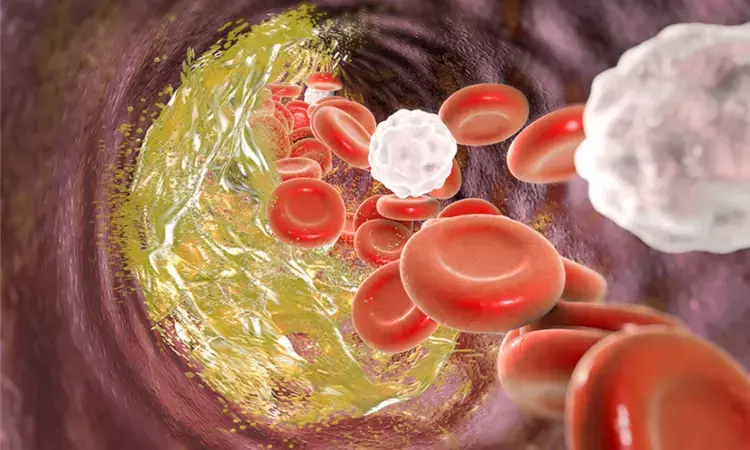- Home
- Medical news & Guidelines
- Anesthesiology
- Cardiology and CTVS
- Critical Care
- Dentistry
- Dermatology
- Diabetes and Endocrinology
- ENT
- Gastroenterology
- Medicine
- Nephrology
- Neurology
- Obstretics-Gynaecology
- Oncology
- Ophthalmology
- Orthopaedics
- Pediatrics-Neonatology
- Psychiatry
- Pulmonology
- Radiology
- Surgery
- Urology
- Laboratory Medicine
- Diet
- Nursing
- Paramedical
- Physiotherapy
- Health news
- Fact Check
- Bone Health Fact Check
- Brain Health Fact Check
- Cancer Related Fact Check
- Child Care Fact Check
- Dental and oral health fact check
- Diabetes and metabolic health fact check
- Diet and Nutrition Fact Check
- Eye and ENT Care Fact Check
- Fitness fact check
- Gut health fact check
- Heart health fact check
- Kidney health fact check
- Medical education fact check
- Men's health fact check
- Respiratory fact check
- Skin and hair care fact check
- Vaccine and Immunization fact check
- Women's health fact check
- AYUSH
- State News
- Andaman and Nicobar Islands
- Andhra Pradesh
- Arunachal Pradesh
- Assam
- Bihar
- Chandigarh
- Chattisgarh
- Dadra and Nagar Haveli
- Daman and Diu
- Delhi
- Goa
- Gujarat
- Haryana
- Himachal Pradesh
- Jammu & Kashmir
- Jharkhand
- Karnataka
- Kerala
- Ladakh
- Lakshadweep
- Madhya Pradesh
- Maharashtra
- Manipur
- Meghalaya
- Mizoram
- Nagaland
- Odisha
- Puducherry
- Punjab
- Rajasthan
- Sikkim
- Tamil Nadu
- Telangana
- Tripura
- Uttar Pradesh
- Uttrakhand
- West Bengal
- Medical Education
- Industry
Urate Deposits in Blood Vessels may Increase CV Risk in Gout Patients, claims study

A recent research published in the Rheumatology journal identified a significant link between cardiovascular monosodium urate deposits and an increased likelihood of major cardiovascular events in patients with gout and hyperuricemia. The findings were derived from a retrospective cohort study that suggest the association of gout with the presence of urate deposits which could be a pivotal marker for assessing heart disease risks in these patients.
The study analyzed data from 189 individuals who underwent dual energy computed tomography scans of the thorax and an affected limb, in the patients suspected of gout, from June 1, 2012 to December 5, 2019. The group included a total of 131 gout patients, 40 patients with hyperuricemia (elevated uric acid levels without gout symptoms) and 18 controls.
The findings revealed that 45% of the patients had detectable cardiovascular monosodium urate deposits. This group had higher levels of serum acute phase reactants which is a marker of inflammation and uric acid, also higher calcium scores on their CT scans that indicates the presence of more substantial atherosclerotic plaque. These patients also underwent a increased rate of major adverse cardiac events. Over the median follow-up period of 33 months, 25.9% of patients with urate deposits underwent such events when compared to only 12.5% of the individuals without these deposits.
The study highlights the presence of urate deposits was associated with a doubling of risk for major cardiac events (odds ratio 2.4; p=0.018). This finding suggests that urate deposits might be used as an additional factor for risk stratification in patients with gout or hyperuricemia.
The risk assessment for heart diseases in gout and hyperuricemia patients is often based on classical cardiovascular risk scores that include factors like cholesterol levels, smoking status and blood pressure. These scores sometimes do not adequately predict risk in these groups. The inclusion of advanced imaging techniques like dual energy computed tomography could improve the prediction of cardiovascular risk that makes it possible for earlier intervention and tailored treatment strategies.
Findings like these are very crucial for enhancing the outcomes through more personalized healthcare approaches. The research team hopes that these results will prompt further studies and eventually lead to updates in clinical guidelines for the management of patients with higher uric acid levels and suspected cardiovascular disease.
Source:
Held, J., Schwabl, C., Haschka, D., Maier, S., Feuchtner, G., Widmann, G., Duftner, C., Weiss, G., & Klauser, A. (2024). Major cardiovascular events in patients with cardiovascular monosodium urate deposits in atherosclerotic plaques. In Rheumatology. Oxford University Press (OUP). https://doi.org/10.1093/rheumatology/keae240
Neuroscience Masters graduate
Jacinthlyn Sylvia, a Neuroscience Master's graduate from Chennai has worked extensively in deciphering the neurobiology of cognition and motor control in aging. She also has spread-out exposure to Neurosurgery from her Bachelor’s. She is currently involved in active Neuro-Oncology research. She is an upcoming neuroscientist with a fiery passion for writing. Her news cover at Medical Dialogues feature recent discoveries and updates from the healthcare and biomedical research fields. She can be reached at editorial@medicaldialogues.in
Dr Kamal Kant Kohli-MBBS, DTCD- a chest specialist with more than 30 years of practice and a flair for writing clinical articles, Dr Kamal Kant Kohli joined Medical Dialogues as a Chief Editor of Medical News. Besides writing articles, as an editor, he proofreads and verifies all the medical content published on Medical Dialogues including those coming from journals, studies,medical conferences,guidelines etc. Email: drkohli@medicaldialogues.in. Contact no. 011-43720751


